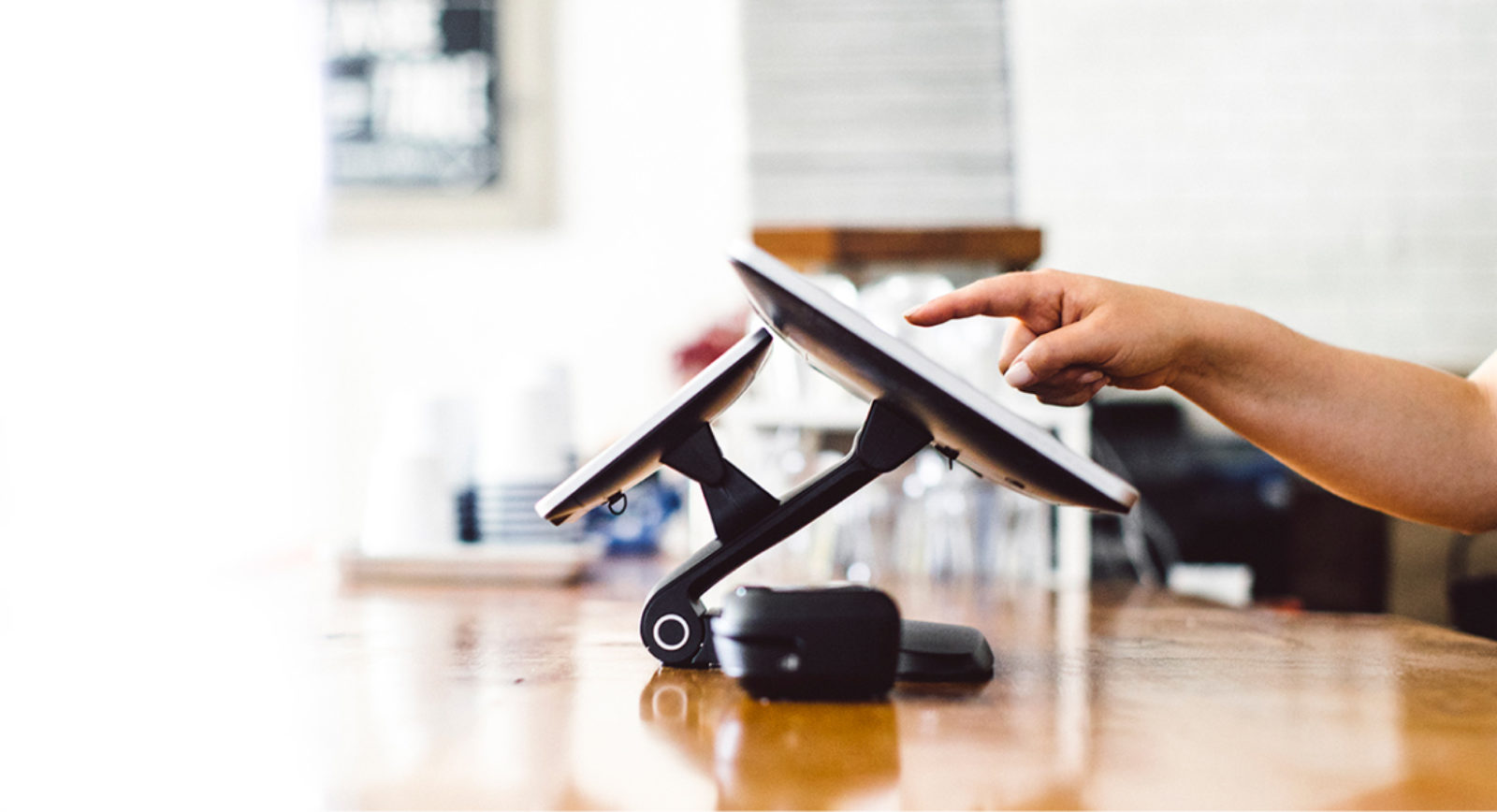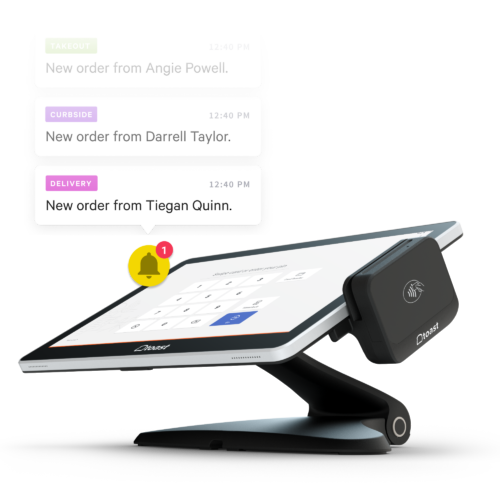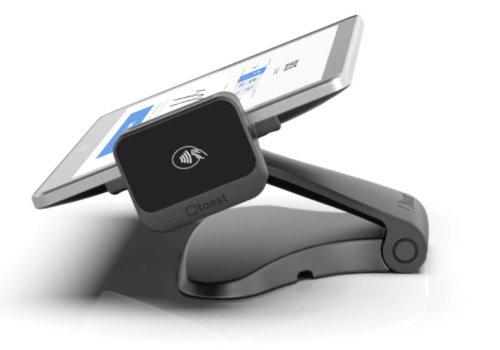Article
How to Choose Between a Cloud-Based POS and a Legacy POS

Check out our guide for choosing between a cloud-based POS and a traditional POS, complete with a comparison of benefits, costs, limitations and hardware/software.
If you’re in the market for a restaurant POS system, you’ll be faced with deciding between a cloud-based POS or a legacy system. Purchasing a restaurant POS system is a huge investment, one that should not be made without extensive research of all the options available. Understanding the differences between a cloud-based POS and a legacy POS is the best place to start.
To help you evaluate the right tools, download the POS comparison guide and check out the Toast vs competitors compare guide.
RESOURCE
Find the right POS for your restaurant's unique needs
By requesting a demo, you agree to receive automated text messages from Toast. We’ll handle your info according to our privacy statement. Additional information for California residents available here.
What is a cloud-based POS?
A cloud-based POS also referred to as a Software-as-a-Service (SaaS) platform or web-based POS, is a web-hosted point of sale solution that stores data on remote servers. This data is accessible wherever there’s wifi because the cloud is everywhere — you access the cloud every time you log in to Facebook, Gmail, or your online banking application. For a POS, this means you can change a menu item from your living room couch.
A Legacy POS, also known as “on-premise” or “traditional” POS, stores data on local servers and runs on a closed internal network. An example of on-premise software would be family photos saved on the desktop of your home computer — not accessible via the internet anywhere else.
Here’s a side-by-side comparison of how cloud-based POS and legacy POS stack up when evaluating cost, hardware options, data storage, maintenance, and other key characteristics.
Legacy POS | Cloud-Based POS | |
Cost* | $30,000 – $50,000 / year | $600 – $10,000 / year |
Payments | Upfront license fee + monthly maintenance fees | Monthly payments |
Software | Installed on-premise by a technician | Hosted online |
Hardware | Bulky stationary terminals | Mobile and stationary tablets |
Data Storage | Computer in the back office of the restaurant | Remote cloud access |
Maintenance | On-location for the majority of issues | 95% of support calls do not have to be onsite |
Limitations | Data access, systems integration, stationary hardware, high cost, low flexibility | Internet reliance in some systems** |
*Costs vary based on individual needs and requirements.
** Unlike other cloud-based POS systems, Toast supports a fully functional offline mode.
Now that you see the differences laid out in front of you, let’s dig into the benefits of choosing a cloud-based POS as your restaurant POS system.
Why restaurateurs choose cloud-based POS over legacy POS
What are the advantages of switching from a legacy POS to a new cloud-based POS? Greater flexibility, cleaner data, and frictionless guest experiences top the list.
But how does a cloud-based system help a restaurant scale? Do the benefits outweigh the pain of the switch? If you decide to go ahead, what features make the most impact?
Here’s what real restaurateurs had to say about why they chose to make the switch from a legacy POS to a cloud-based POS system.
1. Cloud-based POS Systems can scale as your business does
For Massimo Mallozzi, vice president of IT at Paris Baguette, scalability and the ability to move quickly with new technology is the most important aspect of a cloud-based POS. Massimo says
“We’re in a position now where we're looking at aggressive growth mode — scaled to 1,000 units in the US in the next 10 years. When I look at, ‘How do we do that?’ we need to get to a place we're leveraging technology solutions that allow us to scale at that pace quickly and that allows us to use mobility.”
The restaurant POS system you choose should not only be able to keep pace with your restaurant’s daily operations but should also be able to handle the volume increases that occur as your restaurant business grows.
Investing in a full-featured cloud-based POS system will give you access to a suite of features – like a restaurant CRM solution, guest feedback, reporting & analytics, and payroll – that would normally be served by four or five vendors. Should there be a solution vital to the success of your restaurant that isn’t available as a feature of the POS system, the cloud-based POS you choose should offer the ability to integrate these tech solutions – like an inventory management platform or a scheduling platform – directly into your POS.
The best restaurant POS system will:
- Encompass solutions to your restaurant’s needs and challenges in an all-in-one solution.
- Be simple and fast to set up.
- Keep your business moving forward.
2. Cloud-based POS systems are cost-efficient
Cloud-based POS systems tend to be significantly less expensive and require fewer upfront costs than their legacy counterparts. Why is this? Cloud-based POS costs are usually lower because:
installation is less complex
maintenance is performed remotely
there are more affordable hardware options available
Back office servers to store legacy data can run as high as $50,000, and that cost is completely eliminated when data is stored in the cloud. Additionally, SaaS POS systems are subscription-based “pay as you go” with no long-term contracts.
The best restaurant POS system will:
- Be competitively priced.
- Offer ongoing updates so you’re not constantly repurchasing hardware.
3. Cloud-based POS systems are easy to update
Legacy POS systems often require laborious and time-consuming software updates, whereas cloud-based POS systems can be updated anywhere there’s internet, with no additional cost or excess time spent.
Jon Hartis, the CTO of Reach Restaurant Group, once worked for a restaurant brand where he had three people managing 450 restaurant sites in ten different countries. With local partners in those countries, his restaurants needed quick and easy POS availability in order to make changes and updates remotely. Without a cloud-based POS system, the process to push updates live is much more difficult.
Now, with a cloud-based system, “within five seconds, I've already updated every tablet and every terminal that's in a restaurant,” Jon said.
For chains, this means that all locations will be on the same version of the POS, streamlining and simplifying processes for all. Updates, menu changes, price adjustments, and more can be changed anywhere -- allowing your restaurant to be as efficient as possible.
The best restaurant POS system will:
- Allow for remote management/access.
- Not require additional investments to manage and maintain.
4. Cloud-based POS hardware is intuitive and modern
Mobile technology has revolutionized worldwide commerce, and the foodservice industry is no exception. Mobile POS systems open up possibilities for restaurants and nightclubs to modernize their service. Unlike legacy solutions, cloud-based POS systems can support handheld devices that send orders straight to the kitchen or bar, while also storing customer information in the cloud. With mobile tableside ordering, some restaurants have seen table turn times improve by 15% because servers spend more time with guests and less time entering orders and modifications on a terminal.
Paul Zarmati, the Director of IT at Bareburger, says implementing the use of handhelds has improved turn time and delighted their guests.
“It makes the servers seem like magicians! When they take the drink and food order at the same time, sometimes the guests’ drinks show up while the server is still standing there. It helps us with table turns but it’s also a cool experience for the guest.”
The best restaurant POS system will:
- Offer a painless adoption curve, requiring less training time for staff.
- Be easy to use and understand.
- Offer hand-held options that give your servers more time with their tables.
5. Cloud-based POS systems provide access to clean, actionable data
A cloud-based platform means you can check data wherever and whenever. Restaurants are increasingly data-driven because that restaurant POS data can track everything from your customer relationships, financial reporting, and current food supplies, according to the 2019 Toast Restaurant Success Report. Access to real-time data informs all the important decisions you make at your restaurant daily.
Additionally, access to data in real-time allows you to streamline your marketing and improve your guest experience. The best cloud-based systems build and store CRM data, allowing your restaurant to target specific groups and guests through your marketing programs.
Michael Verdesa, CIO of Focus Brands, said: “It really gives you the full view of the customer.”
Focus Brands, a developer of foodservice brands, also uses data to zero in on areas of the business that could use some extra attention or engagement. Michael explained that different franchises in the Focus Brands group will sometimes host and compete with each other in sales contests on high-volume days. Programs like this boost revenue, of course, but they also create healthy competition and build camaraderie among employees within the agency’s “brand universe”.
The best restaurant POS system will:
- Give you access to data in real-time.
- Help you make decisions and adjust your plans on the fly.
- Provide a complete view of your customer.
6. Cloud-based POS systems allow for seamless restaurant management
A cloud-based system affords restaurant owners, operators, and managers more time to interact with guests because they spend less time in the back office.
Jon Hartis summed up this benefit, saying
“Our managers have the ability to basically service the whole entire restaurant anywhere they are at with just pulling out the handheld. That could be reporting. That could be sales. That could be a product mix. That could be comps or discounts. It's pretty powerful."
The best restaurant POS system will:
- Free you from the back office, allowing you to be more present in the front of the house.
7. Cloud-based POS systems enhance the guest experience
Cloud-based POS systems allow for faster, easier, more seamless guest experiences. Guests can more quickly and easily pay their checks, ensuring a more positive experience throughout. And of course, faster frictionless checkouts means that you are able to turn tables faster.
Massimo Malozzi shared how Paris Baguette uses their cloud-based POS right at the table:
“We started doing table touches in a fast-casual. We walk around and say, ‘Hey. Do you want me to warm up that coffee for you? By the way, do you want something sweet? Do you want a cookie or something?’ If they say yes, we ring them up right at the table. Again, we would have never thought of something like that in our concept that we're testing out now, so it gives us some innovation of how we're using the technology.”
What’s more, any gripes of unhappy customers can be addressed immediately — before a customer leaves the restaurant. The best POS systems allow guests to leave simple, immediate feedback (like a thumbs up or thumbs down) at checkout. Jon Hartis notes that for his group, the feedback is essential:
“Every one of our managers and our host gets a text that identifies this guest has left a negative review. They're at this table. This was their server. This was the amount of their check. Having that information at your fingertips to be able to provide a guest recovery before they even leave your door is pretty powerful to us.”

The best restaurant POS system will:
- Enable the ability to service guests in real-time, delivering a frictionless experience.
- Address problems or unhappy guests immediately for more successful outcomes.
Given that your restaurant is moving a mile a minute, your POS should be able to keep pace. In any cloud-based system, look for scalability and speed, ease of adoption and updating, cost-effectiveness, accessible, clean data, seamless management, and frictionless guest experiences. If you have a POS system that incorporates all this, you won’t have to worry about anything slowing you down.
Related Point of Sale Resources

DISCLAIMER: This information is provided for general informational purposes only, and publication does not constitute an endorsement. Toast does not warrant the accuracy or completeness of any information, text, graphics, links, or other items contained within this content. Toast does not guarantee you will achieve any specific results if you follow any advice herein. It may be advisable for you to consult with a professional such as a lawyer, accountant, or business advisor for advice specific to your situation.
